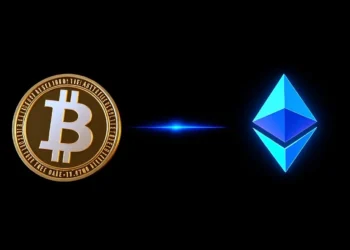Did you know that the cryptocurrency market reached a valuation of over $1 trillion? This shows just how much digital currencies and blockchain tech is becoming popular. At the core of any blockchain are the methods that keep it secure and make sure that everyone agrees on the transactions. Two of the most popular ways to do this are Proof of Work (PoW) and Proof of Stake (PoS).
If you are involved in cryptocurrency, knowing how these systems operate is super important. Let’s compare Proof of Work and Proof of Stake. We will examine their strengths and weaknesses. We’ll also explore how they affect the entire blockchain world.
What is Proof of Work (PoW)?
Proof of Work, or PoW, is a way to confirm transactions and add new blocks to a blockchain. Think of it as a digital competition where computers race to solve puzzles. The first one to solve the puzzle gets to add the next block of transactions to the chain.
How Proof of Work Functions
The way Proof of Work functions can be complex, but the main thing to know is that people are competing to solve a hash puzzle. It is a process known as mining. Miners use their computers to solve these hard math problems. This requires lots of power. The goal is to find a hash. That hash meets certain conditions set by the network.
The computer that solves the puzzle broadcasts it to the network. Other computers check to make sure it is correct. If verified, the new block is added to the chain. The miner that found the solution gets rewarded with crypto. This encourages people to keep mining and keep the blockchain secure.
Security Aspects of Proof of Work
PoW is known for its strong security. One risk is the 51% attack. This is when someone controls over half of the network’s mining power. They could then change transactions or block new ones. However, it would cost a ton of money and power to pull this off, which makes it unlikely.
Because it takes so much effort to solve the puzzles, it makes the blockchain super hard to change. Each block is linked to the one before it. Changing one block would mean redoing all the work that came after it, which is nearly impossible.
What is Proof of Stake (PoS)?
Proof of Stake, or PoS, is another way to verify transactions. It adds new blocks to a blockchain. Rather than mining, PoS uses something called staking. People lock up some of their crypto to help secure the network.
How Proof of Stake Functions
In Proof of Stake, people become validators. Validators are similar to miners. They don’t solve math problems. Instead, they are chosen to create new blocks and verify transactions. The amount of crypto they stake usually determines how likely they are to be picked. The more you stake, the better your chances.
There are different versions of PoS, such as Delegated Proof of Stake (DPoS). In DPoS, people vote for delegates. These delegates then validate transactions. PoS can be more energy-efficient than PoW.
Security Aspects of Proof of Stake
One issue with PoS is the “nothing at stake” problem. Validators might try to validate multiple blocks at once. This could weaken the network. Solutions include slashing. It penalizes validators if they act dishonestly.
Attacking a PoS network can be costly. To mess with the blockchain, you’d need to buy a large amount of the staked crypto. Then you need to risk it all. This cost is a big deterrent for bad actors.
Proof of Work vs. Proof of Stake: A Detailed Comparison
Proof of Work and Proof of Stake both try to do the same thing. That is, to keep a blockchain secure and make sure everyone agrees on the transactions. However, they work in very different ways.
Energy Consumption
PoW is known for using tons of energy. Mining requires powerful computers running all the time. This uses a lot of electricity. Bitcoin, for example, uses about as much energy as some small countries.
PoS is much greener. Staking doesn’t require as much energy. Validators only need to keep their computers running to verify transactions. This makes PoS a more eco-friendly choice.
Scalability
PoW can have issues with how fast it handles transactions. Bitcoin can only process a few transactions per second. The time it takes to create a new block also slows things down.
PoS can potentially handle more transactions faster. Without the need for mining, new blocks can be added more quickly. That leads to a faster and more scalable network.
Decentralization
Some people believe PoW is more decentralized. Anyone can become a miner if they have the right equipment. Yet, mining pools can get very large. These pools can control a big part of the network.
With PoS, there are worries that those with the most crypto will have the most say. This could lead to a concentration of wealth and power. It is also important to be aware of the barriers of entry for both systems.
Security
PoW is known for being very secure. To attack the network, someone would need a huge amount of computing power. This makes it very expensive to try and cheat the system.
PoS uses economic incentives to keep the network safe. If someone tries to attack the network, they risk losing their staked crypto. This makes attacking the network costly for a would-be attacker.
The Future of Consensus Mechanisms
The world of blockchain is always changing. New ways of verifying transactions are emerging. These new methods try to fix some problems with PoW and PoS.
Proof of Authority (PoA) and Other Alternatives
Proof of Authority, or PoA, is a system where only approved people can validate transactions. It is faster and more efficient. However, it’s also less decentralized. It is best used for private blockchains where trust is more important.
Other options include Proof of Capacity (PoC) and Proof of History (PoH). They all have their own strengths and weaknesses. Each are suited for different kinds of blockchains.
The Merge and Ethereum’s Transition to PoS
One of the biggest changes in the blockchain world was when Ethereum switched from PoW to PoS. This event was called “The Merge.” It greatly reduced Ethereum’s energy usage. It also sets the stage for future improvements to the network’s speed and scalability.
The Merge shows how blockchain technology is evolving. It paves the way for more eco-friendly and efficient systems.
Which Consensus Mechanism is Right for You?
Choosing a blockchain can depend on what you need. The consensus mechanism is important. It affects things like security, speed, and how eco-friendly it is.
Key Considerations When Choosing a Blockchain
Think about what’s most important. Do you want a super secure network, even if it uses more energy? Or, do you prefer a faster, greener blockchain, even if it means some trade-offs on decentralization?
If you are an investor, you might care more about security and stability. If you are a developer, you might focus on speed and scalability. It all depends on your goals.
Final Thoughts and Expert Opinions
Experts have different ideas about the best consensus mechanism. Some believe PoW is the most secure. Others think PoS is the future. What matters most is to understand the trade-offs and choose what fits your needs.
Remember, both PoW and PoS have their pros and cons. What works best depends on the specific goals of the blockchain and its users.
Conclusion
Proof of Work and Proof of Stake are the main ways blockchains make sure transactions are correct and secure. PoW uses energy-intensive mining. PoS uses staking. Each method has its own strengths and weaknesses.
Knowing how these mechanisms work is key to understanding the blockchain world. So, go ahead and check out blockchains that use different ways to verify transactions. Explore the world of blockchain today!

























